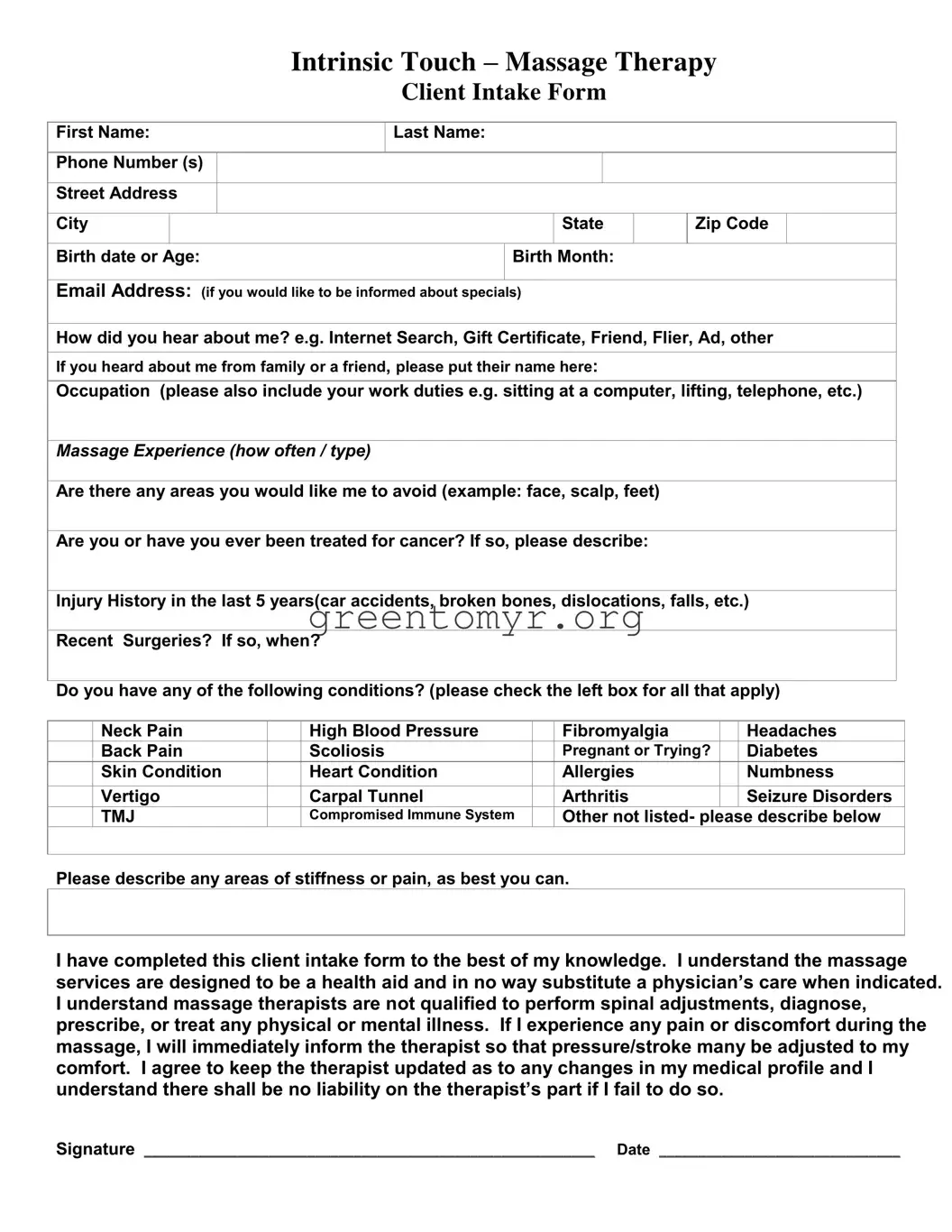|
|
Intrinsic Touch – Massage Therapy |
|
|
|
Client Intake Form |
|
|
|
|
|
|
|
|
|
|
|
|
First Name: |
|
Last Name: |
|
|
|
|
|
|
|
|
|
|
|
|
Phone Number (s) |
|
|
|
|
|
|
|
|
|
|
|
|
|
|
|
|
|
|
Street Address |
|
|
|
|
|
|
|
|
|
|
|
|
|
|
|
|
|
City |
|
|
|
|
State |
|
Zip Code |
|
|
|
|
|
|
|
|
|
|
Birth date or Age: |
|
|
Birth Month: |
|
|
|
|
|
|
|
|
|
|
|
|
Email Address: (if you would like to be informed about specials)
How did you hear about me? e.g. Internet Search, Gift Certificate, Friend, Flier, Ad, other
If you heard about me from family or a friend, please put their name here:
Occupation (please also include your work duties e.g. sitting at a computer, lifting, telephone, etc.)
Massage Experience (how often / type)
Are there any areas you would like me to avoid (example: face, scalp, feet)
Are you or have you ever been treated for cancer? If so, please describe:
Injury History in the last 5 years(car accidents, broken bones, dislocations, falls, etc.)
Recent Surgeries? If so, when?
Do you have any of the following conditions? (please check the left box for all that apply)
|
Neck Pain |
|
High Blood Pressure |
|
Fibromyalgia |
|
Headaches |
|
Back Pain |
|
Scoliosis |
|
Pregnant or Trying? |
|
Diabetes |
|
Skin Condition |
|
Heart Condition |
|
Allergies |
|
Numbness |
|
|
|
|
|
|
|
|
|
Vertigo |
|
Carpal Tunnel |
|
Arthritis |
|
Seizure Disorders |
|
TMJ |
|
Compromised Immune System |
|
Other not listed- please describe below |
|
|
|
|
|
|
|
|
Please describe any areas of stiffness or pain, as best you can.
I have completed this client intake form to the best of my knowledge. I understand the massage services are designed to be a health aid and in no way substitute a physician’s care when indicated.
I understand massage therapists are not qualified to perform spinal adjustments, diagnose, prescribe, or treat any physical or mental illness. If I experience any pain or discomfort during the massage, I will immediately inform the therapist so that pressure/stroke many be adjusted to my
comfort. I agree to keep the therapist updated as to any changes in my medical profile and I understand there shall be no liability on the therapist’s part if I fail to do so.

